Richard Tung Chiang
age ~78
from San Marino, CA
- Also known as:
-
- Richard T Chiang
- Richard Emily Chiang
- Richard Emily Wu Chiang
- Richard H Chiang
- Richard T Chang
- Richard T Chian
- Richard Chaing
Richard Chiang Phones & Addresses
- San Marino, CA
- Monterey Park, CA
- 1716 W Hellman Ave, Alhambra, CA 91803 • (626)2890250
- 1205 W Hellman Ave, Alhambra, CA 91803
- Northridge, CA
- Van Nuys, CA
- Los Angeles, CA
- 1460 Bellwood Rd, San Marino, CA 91108
Education
-
Degree:Graduate or professional degree
Medicine Doctors

Richard T. Chiang
view sourceSpecialties:
Cardiovascular Disease
Work:
Kaiser Permanente Medical GroupKaiser Permanente San Leandro Medical Center
2500 Merced St FL 3, San Leandro, CA 94577
(510)4544010 (phone), (510)4546947 (fax)
2500 Merced St FL 3, San Leandro, CA 94577
(510)4544010 (phone), (510)4546947 (fax)
Education:
Medical School
Natl Taiwan Univ Coll of Med, Taipei, Taiwan (385 02 Prior 1/71)
Graduated: 1980
Natl Taiwan Univ Coll of Med, Taipei, Taiwan (385 02 Prior 1/71)
Graduated: 1980
Procedures:
Cardiac Stress Test
Echocardiogram
Electrocardiogram (EKG or ECG)
Echocardiogram
Electrocardiogram (EKG or ECG)
Conditions:
Atrial Fibrillation and Atrial Flutter
Cardiac Arrhythmia
Cardiomyopathy
Heart Failure
Ischemic Heart Disease
Cardiac Arrhythmia
Cardiomyopathy
Heart Failure
Ischemic Heart Disease
Languages:
English
Description:
Dr. Chiang graduated from the Natl Taiwan Univ Coll of Med, Taipei, Taiwan (385 02 Prior 1/71) in 1980. He works in San Leandro, CA and specializes in Cardiovascular Disease. Dr. Chiang is affiliated with Kaiser Permanente Medical Center - Roseville.
Name / Title
Company / Classification
Phones & Addresses
President
Central Bridge Investment, Inc
Whol Tapes & Cassettes
Whol Tapes & Cassettes
10158 Olney St, El Monte, CA 91731
(626)3508188
(626)3508188
Partner
California Book Exchange
Ret New and Used College Textbooks
Ret New and Used College Textbooks
3976 Market St, Riverside, CA 92501
PO Box 1099, Yorba Linda, CA 92885
(951)7881288
PO Box 1099, Yorba Linda, CA 92885
(951)7881288
Kert Investment, LLC
Real Estate Rental
Real Estate Rental
18726 Pimlico Ter, Yorba Linda, CA 92886
President
Poly-Precision, Inc
7752 Densmore Ave, Van Nuys, CA 91406
President
CAL. BOOK EXCHANGE, INC
410 E Chapman Ave #B, Fullerton, CA 92832
Director
Taitron Components, Inc
Electrical/Electronic Manufacturing · Distributes Electronic Components & Equipments · Distributor of Electronic Components & Equipments · Electronic Parts and Equipment, NEC
Electrical/Electronic Manufacturing · Distributes Electronic Components & Equipments · Distributor of Electronic Components & Equipments · Electronic Parts and Equipment, NEC
28040 W Harrison Pkwy, Valencia, CA 91335
(661)2576060, (661)2576415
(661)2576060, (661)2576415
Secretary
WEST COAST DRAYAGE, INC
Local Trucking Operator
Local Trucking Operator
3353 Gilman Rd, El Monte, CA 91732
PO Box 5543, El Monte, CA 91734
(626)5750083
PO Box 5543, El Monte, CA 91734
(626)5750083
Stewart & Associates, LLC
Mfr Sales Rep/Private Loss Prev. Consult
Mfr Sales Rep/Private Loss Prev. Consult
9255 W Sunset Blvd, Los Angeles, CA 90069
3788 Muirfield St, El Monte, CA 91732
3788 Muirfield St, El Monte, CA 91732
Us Patents
-
Spacecraft Thermal Shock Suppression System
view source -
US Patent:6607167, Aug 19, 2003
-
Filed:Feb 1, 2001
-
Appl. No.:09/775126
-
Inventors:Grant Wang - Hacienda Heights CA
Richard Chiang - Rancho Palos Verdes CA -
Assignee:The Boeing Company - Chicago IL
-
International Classification:B64G 144
-
US Classification:244173, 244164
-
Abstract:A satellite system includes a solar wing moveably connected to a satellite central body. A sensor, also coupled to the satellite central body, detects the movement of the body and generates a rate signal based on that movement. Additionally, an actuator, which controls momentum, is coupled to the satellite central body with maximum torque along the thermal shock axis. Subsequently, a rate-dominated thermal shock suppression controller, which is coupled to the satellite central body, receives the rate signal from the sensor to control the actuator.
-
Phase Recovery Filtering Techniques For Scp Throughput Shortage
view source -
US Patent:6980893, Dec 27, 2005
-
Filed:Nov 21, 2003
-
Appl. No.:10/719628
-
Inventors:Richard Y. Chiang - Torrance CA, US
-
Assignee:The Boeing Company - Chicago IL
-
International Classification:G06F019/00
-
US Classification:701 13, 244158 R, 375326
-
Abstract:This invention introduces innovative filtering techniques to recover the instability phase margin loss due to time delay induced from a throughput shortage problem of a spacecraft central processor (SCP). This invention relates to digital control systems and, more particularly, to a phase recovery filtering technique to alleviate spacecraft central computer processor or (SCP) throughput shortages. This filtering technique recovers the unstable phase margin loss due to the time delay caused by the SCP throughput problem. The filtering techniques may be accomplished without schedule slip or extra cost to the project.
-
Window Average Statistics Model For Pointing Stability Jitter Analysis
view source -
US Patent:6988051, Jan 17, 2006
-
Filed:Nov 14, 2003
-
Appl. No.:10/713340
-
Inventors:Richard Y. Chiang - Torrance CA, US
-
Assignee:The Boeing Company - Chicago IL
-
International Classification:G06F 101/14
-
US Classification:702181, 702179
-
Abstract:A method of analysis to process jitter information by using a window average statistic model to determine a pointing accuracy. The pointing accuracy ultimately determines whether or not a mission can proceed. The process includes the following: collect a signal, process the signal to produce data, insert the data from the signal into a statistical model to produce statistics, compile the statistics using the statistics model to produce a probability density function, integrate the probability density function to produce a probability distribution function, determine a pointing accuracy from the probability distribution function.
-
Robust Spacecraft Controller And Method For Designing Same
view source -
US Patent:7337021, Feb 26, 2008
-
Filed:Mar 26, 2003
-
Appl. No.:10/397495
-
Inventors:Richard Y. Chiang - Rancho Palos Verdes CA, US
-
Assignee:The Boeing Company - Chicago IL
-
International Classification:G05B 13/02
-
US Classification:700 28, 700 29, 700 30, 700 31
-
Abstract:A method, apparatus, article of manufacture, and a memory structure for designing a robust controller. The method comprises the steps of determining a plant model G of the system dynamics; bounding system dynamics unmodeled by the plant model G of the system dynamics by a weighting function W; applying a transform to an augmented plant model T having the plant model G and the weighting function W; defining a controller {tilde over (F)} from the transformed plant model T; and applying an inverse of the transform to the controller {tilde over (F)} defined from the transformed plant model and the weighting function W to generate the robust controller F.
-
Gyroless Transfer Orbit Sun Acquisition Using Only Wing Current Measurement Feedback
view source -
US Patent:8131409, Mar 6, 2012
-
Filed:Dec 10, 2009
-
Appl. No.:12/635426
-
Inventors:Tung-Ching Tsao - Torrance CA, US
Richard Y. Chiang - Torrance CA, US -
Assignee:The Boeing Company - Chicago IL
-
International Classification:G05D 1/08
B64G 1/10 -
US Classification:701 13, 244164
-
Abstract:A system and method for gyroless transfer orbit sun acquisition using only wing current measurement feedback is disclosed. With this system and method, a spacecraft is able to maneuver itself to orient its solar panel to its maximum solar exposure spinning attitude. The disclosed system and method involve controlling a spacecraft maneuver using only the solar wing current feedback as the sole closed-loop feedback sensor for attitude control. A spin controller is used for controlling the spacecraft spin axis orientation and spin rate. The spin controller commands the spacecraft spin axis orientation to align with an inertial fixed-direction and to rotate at a specified spin rate by using a momentum vector. In addition, a method for estimating spacecraft body angular rate and spacecraft attitude is disclosed. This method uses a combination of solar array current and spacecraft momentum as the cost function with solar wing current feedback as the only closed-loop feedback sensor.
-
Spacecraft Acquisition Maneuvers Using Position-Based Gyroless Control
view source -
US Patent:8380370, Feb 19, 2013
-
Filed:Jun 18, 2009
-
Appl. No.:12/487187
-
Inventors:Dan Y. Liu - Rancho Palos Verdes CA, US
Richard Y. Chiang - Torrance CA, US -
Assignee:The Boeing Company - Chicago IL
-
International Classification:B64G 1/24
-
US Classification:701 13, 701 3, 701 4, 701 11, 701400, 701408, 701501, 701505, 701512, 701513, 701523, 701534, 2441581, 2441584, 2441588, 244164, 244165, 244171, 2441711, 2441726
-
Abstract:A system and a method for commanding a spacecraft to perform a three-axis maneuver purely based on “position” (i. e. , attitude) measurements. Using an “inertial gimbal concept”, a set of formulae are derived that can map a set of “inertial” motion to the spacecraft body frame based on position information so that the spacecraft can perform/follow according to the desired inertial position maneuvers commands. Also, the system and method disclosed herein employ an intrusion steering law to protect the spacecraft from acquisition failure when a long sensor intrusion occurs.
-
Systems And Method Of Controlling A Spacecraft Using Attitude Sensors
view source -
US Patent:8620496, Dec 31, 2013
-
Filed:Jul 23, 2008
-
Appl. No.:12/178440
-
Inventors:Dan Y. Liu - Rancho Palos Verdes CA, US
Qinghong W. Wang - Torrance CA, US
Richard Y. Chiang - Torrance CA, US -
Assignee:The Boeing Company - Chicago IL
-
International Classification:B64G 1/38
B64G 1/28 -
US Classification:701 13, 244165, 244170
-
Abstract:A system for damping nutation and removing wobble of a spacecraft spinning about a given axis is provided. The system includes a sensor configured to determine three dimensional attitude measurements of the spacecraft, a processor operatively coupled to the sensor and configured to execute a process that facilitates aligning the spin axis with a spacecraft momentum vector. The processor, when executing the process, is programmed to receive spacecraft attitude data from the sensor, determine a torque command using the received attitude data, and control a momentum storage actuator on the spacecraft using the determined torque command such that an angular deviation about the given axis is reduced.
-
In-Flight Control System Stability Margin Assessment
view source -
US Patent:20050131592, Jun 16, 2005
-
Filed:Dec 15, 2003
-
Appl. No.:10/737588
-
Inventors:Richard Chiang - Torrance CA, US
-
Assignee:The Boeing Company - Chicago IL
-
International Classification:G06F007/00
-
US Classification:701013000
-
Abstract:A method for in-flight stability margin assessment includes steps of: exciting a control system with a wide band spectrum excitation signal to produce in-flight data; storing the in-flight data in an on-board computer during operation of a spacecraft mission; downloading the in-flight data via telemetry during operation of the spacecraft mission; estimating a system sensitivity function by taking the ratio of an output power spectrum to an input power spectrum; and determining stability margins of the attitude control system from the system sensitivity function by determining a gain margin GM and a phase margin PM from the formulas: where “a” is the reciprocal of the peak of the system sensitivity function. The method optionally includes redesigning and providing a new control law to the control system if deemed necessary.
Resumes

Richard Chiang
view source
Richard Chiang
view source
Richard Chiang
view source
Owner, Studio 10
view sourcePosition:
Owner at Studio 10
Location:
Greater Los Angeles Area
Industry:
Entertainment
Work:
Studio 10
Owner
Owner
Youtube
Myspace
Plaxo

Richard Chiang
view source
Richard Chiang
view sourceFlickr

Richard Chiang
view source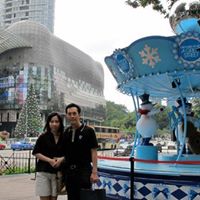
Richard Chiang
view source
Richard Chiang
view source
Richard Chiang
view source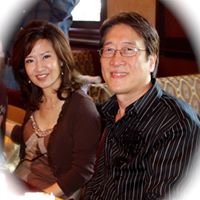
Richard Chiang
view source
Richard Chiang
view source
Richard Chiang
view source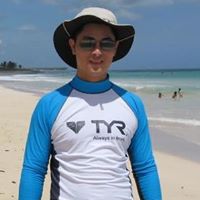
Richard Chiang
view sourceGoogleplus

Richard Chiang
Work:
Wintecind

Richard Chiang
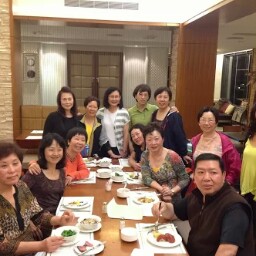
Richard Chiang

Richard Chiang
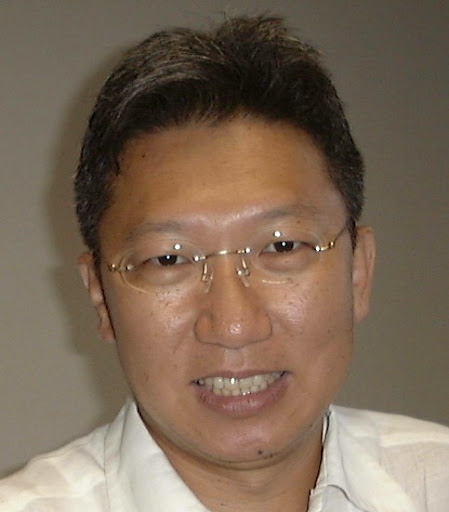
Richard Chiang

Richard Chiang

Richard Chiang

Richard Chiang
Classmates

Richard Chiang
view sourceSchools:
Madrid Middle School El Monte CA 1999-2003

University of California ...
view sourceGraduates:
Christopher Olmsted (1987-1991),
Richard Chen (1988-1992),
Terry Levich (1982-1986),
Richard Chiang (1988-1992)
Richard Chen (1988-1992),
Terry Levich (1982-1986),
Richard Chiang (1988-1992)
Get Report for Richard Tung Chiang from San Marino, CA, age ~78
















